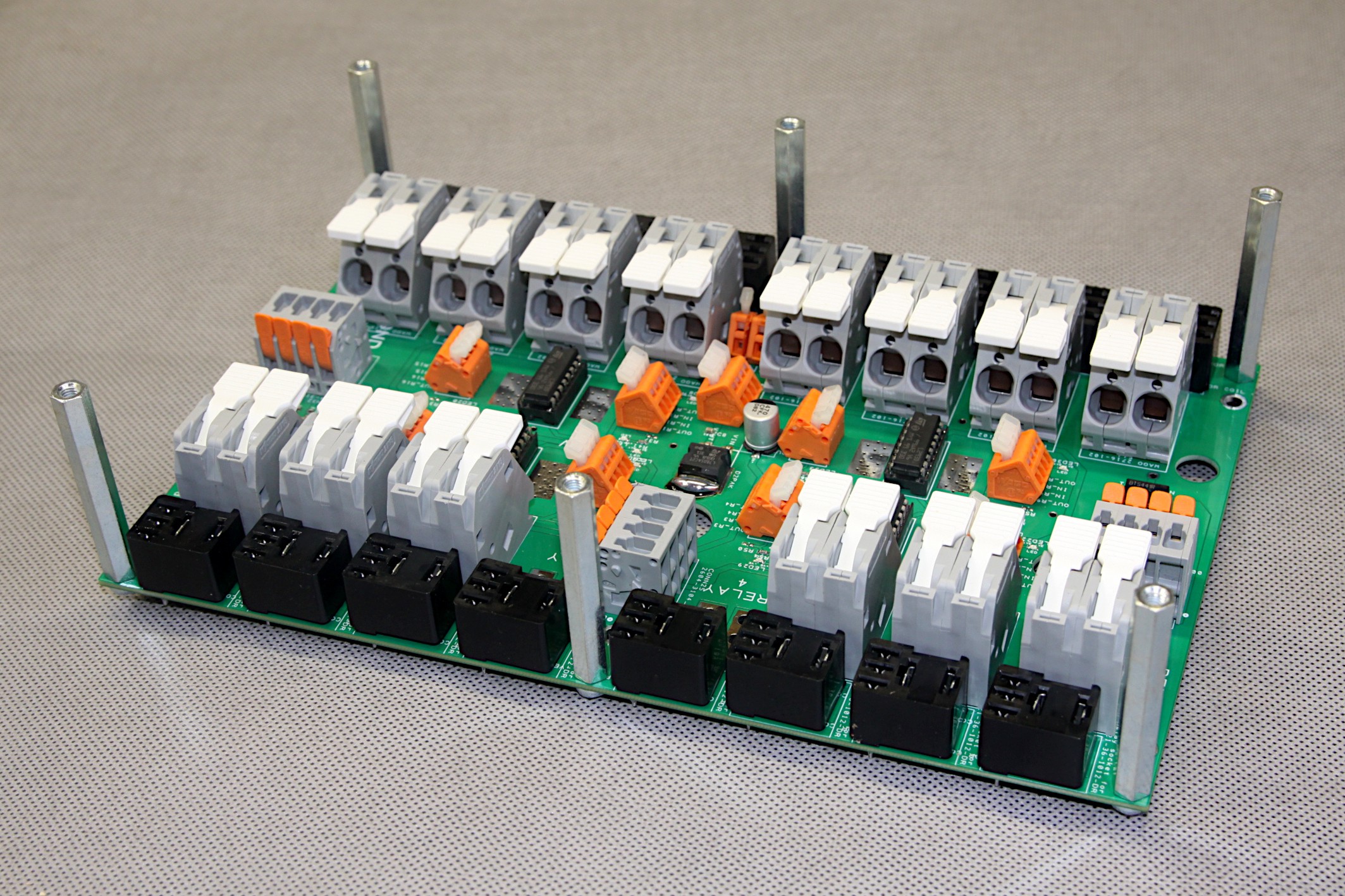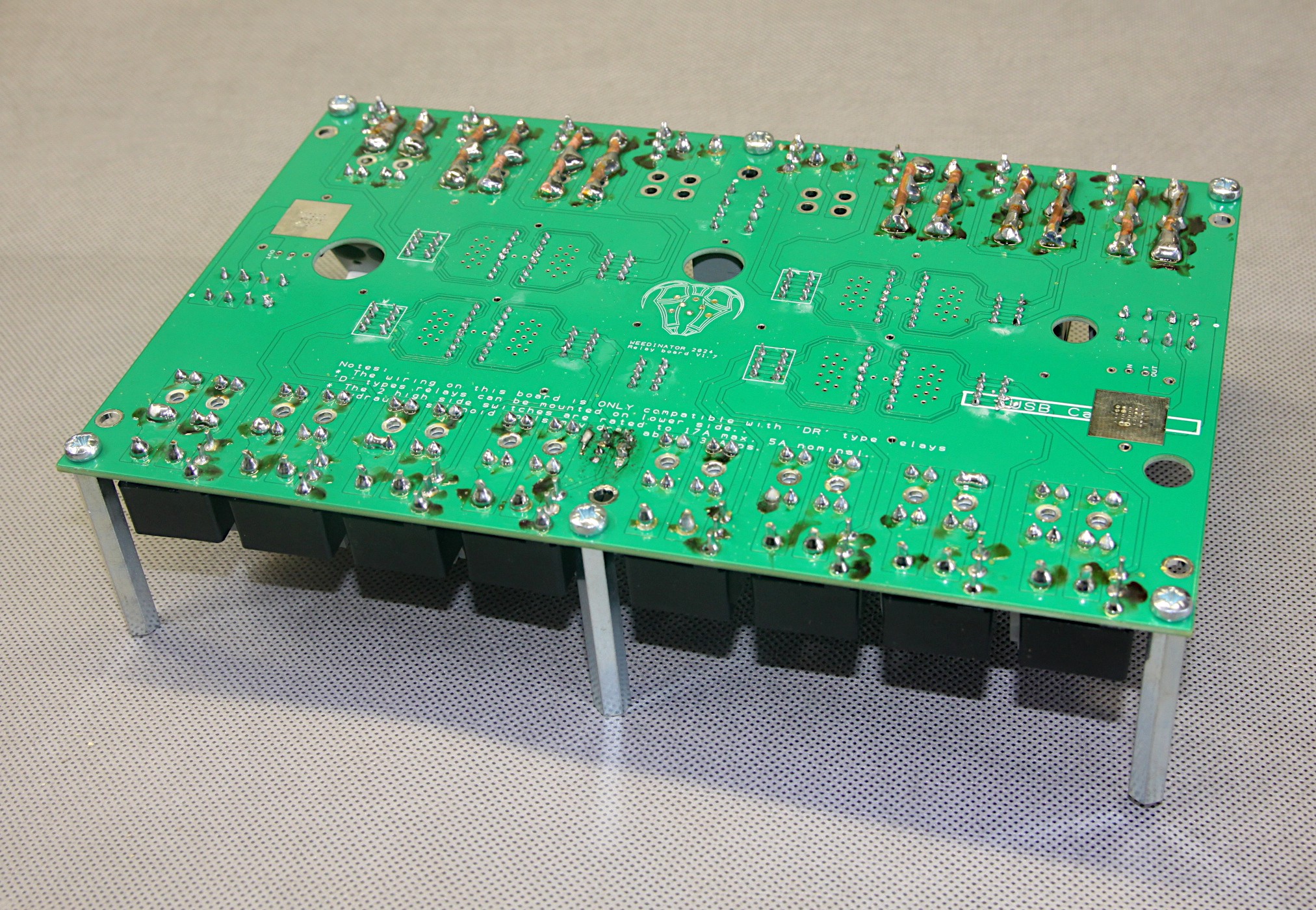Featuring 16 channels with 40 amp automotive relays (relays not plugged in yet) and 2 experimental 4 amp high side switches, this board should be more than capable of illuminating the engine glow plugs (20 amps) and engage the starter motor solenoid (40 amps) for starting the engine. The DIP chips shown in the photo below are ST Stepper Motor Control/Driver L293D chips which can also be used for driving LEDs and relay coils as in this case. There must be some surface mount equivalents somewhere, but not found them yet. The connectors are all by the manufacturer Wago and were selected because of their solid mountings to the PCB and high spring clamping forces. The larger ones could easily break a finger if used wrongly. There's also a SMT 5v regulator for powering the driver chips with 470uF capacitor on the input. The relays could easily have been soldered directly onto the PCB, but using the mounts enable easy replacement if something goes wrong on the machine. The wiring of the relay high current terminals is not connected to the ground plane so a live feed can come out of the analogue fuse box, into the digital fuse box, if required, and then to the glow plugs, for example, which then connect to the machine's common earth.

On the reverse side, as below, there are giant lugs of copper soldered to the relevant relay pins and large grey Wago connectors to carry the 40 amps of current. The relays themselves have fly back protection and are the Durakool 'DR' type. If the 'D' type was used by mistake, there would be plumes of magick smoke emitted from the relays and melting of wire insulation. The PCB, acquired from PCBWay, is 2 oz in weight, which is double the normal thickness and this weight was used to ensure solid connections with the large Wago connectors and no damage to the traces when soldering with a 450 watt soldering iron.

 Capt. Flatus O'Flaherty ☠
Capt. Flatus O'Flaherty ☠
Discussions
Become a Hackaday.io Member
Create an account to leave a comment. Already have an account? Log In.
I also like using the L293D and other stepper adjacent chips as rock solid back-emf tolerant single channel drivers for things like solenoids and relays. I might have to steal this board.
Are you sure? yes | no
Great! The relays I'm using have diode protection, which should help with back EMF, but good to know the L293D's are robust.
Are you sure? yes | no
Now that you mention it, the breakout boards I usually use also have a set of diodes onboard. Well at least in that configuration, it is hard to kill them. For the cost of wasting a bit of power, you get a chip that survives above Vcc on pins for a bit, being shorted out all day quietly limiting current.. etc.
Are you sure? yes | no